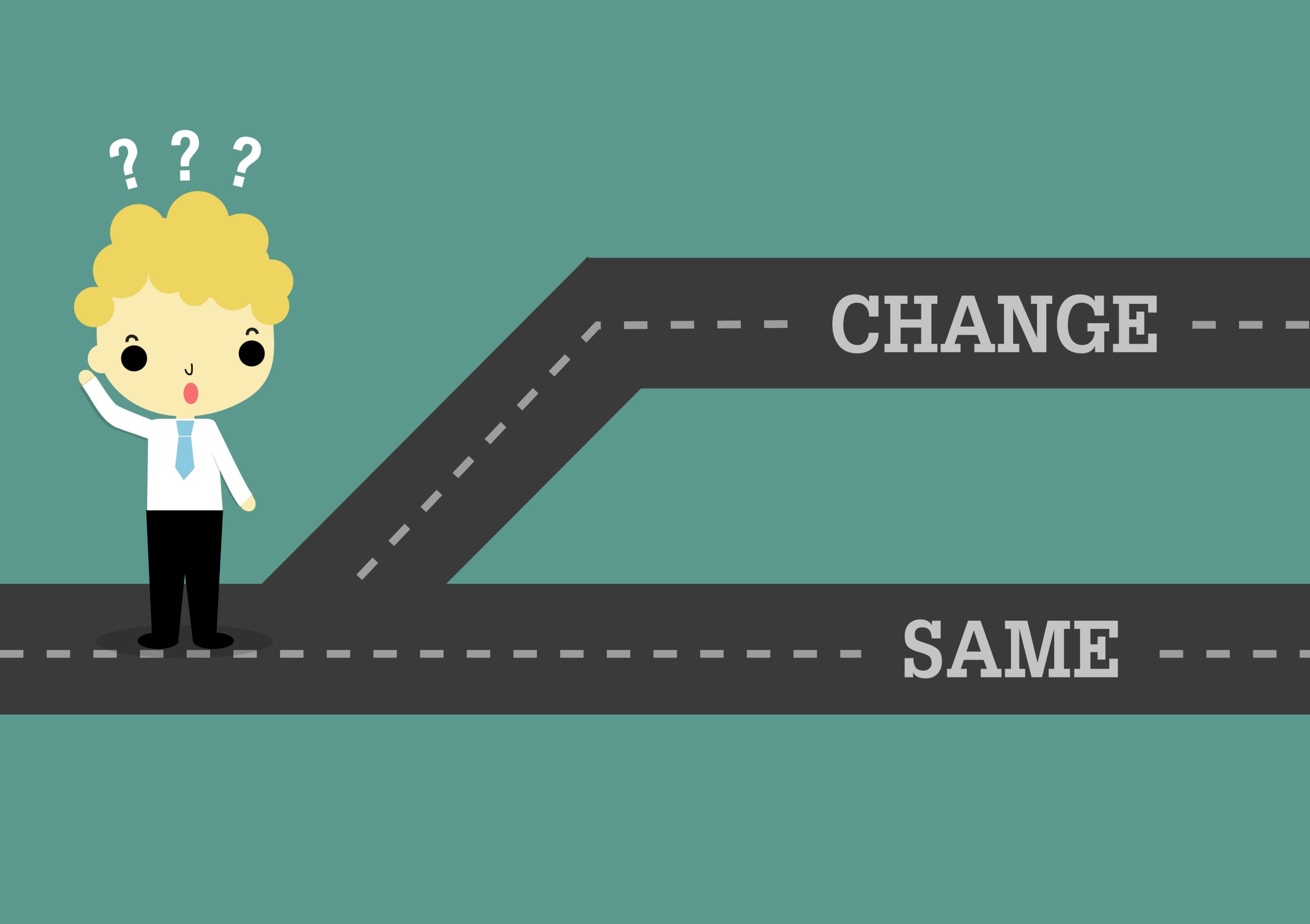Change Management VS. Change Leadership – What’s the Difference?
February 10, 2016

When I mention ‘change’ to a client or to an audience I will often get that glazed over look that says, “here we go again talking about something that we have been DOING for decades!” That’s because what has been talked about for decades is ‘managing change’ and that IS cause for a glazed look. Why?
Because managing change means that change keeps happening and people and companies continue to ‘react’ and ‘deal’ with change – change has become a word of resistance and even apathy.
There is a difference between ‘change management’ and ‘change leadership’ – the difference is vast and I cover the differences off in length in my book “The Art of Change Leadership – Driving Transformation In a Fast Paced World”.
The main difference is that change management refers to a set of basic tools or structures intended to keep any change effort under control. With change management the goal is often to minimize the distractions and pains of the change.
Change leadership, on the other hand, harnesses the energy, the power of people, the driving forces, visions and processes that fuel large-scale and sustainable transformation.
Organizations that are undergoing full scale transformations right now are recognizing that only by engaging every person involved in the change and creating ‘change leaders’ are they actually going to move the needle on change. A government group I worked with a few months ago has a full department called the Department of Transformation and another insurance company has a full scale project named Global Optimization project. These are ‘change leader’ projects in that there is a full scale effort to engage people, to influence people and to educate people about the cycle of change and how to self recognize where one is on the the ‘change cycle’ in order to lead the change necessary to create the desired transformations.
The change cycle becomes a reference tool for individuals and for teams to self assess and to use as an accountability tool that helps keep everyone in alignment with leading change. In change management people spend the majority of their time in resistance whereas with change leadership people spend the majority of their time in integration and focused on the future.
Take a look at the diagram below to see the stages of the change cycle:

As you can see the right side of the change cycle is based on the fear of change, skepticism, defensiveness and anxiety – these are all components of reacting to a change and when focused on ‘change management’ this is where most people spend the majority of his or her energy.
On the left side of the change cycle you see creativity, energy, confidence, productivity, optimism and results which are all components of a change leader. Change leaders expend energy on solutions and seeing the benefits of the change rather than spend an inordinate amount of time on the defensive side of change. Change leadership is proactive, visionary and focused whereas change management is reactive, myopic and fear based.
There is a way to see where you are in regards to ‘change’ take a look at the cycle and ask yourself the following questions:
- Do I respond to change with a predominant focus on the fear of the change?
- Do I resist change even when I know that is a good change?
- Do I spend a good portion of my time looking at creative solutions when faced with resistance from others during a change?
- Do I focus on being productive and confident in advance of a change and during the change itself?
- Do I lead change by being a ‘model’ of energy, composure, leadership and focused on positive outcomes?
These questions help you to know individually where you are in the ‘range’ of change manager or change leader and you can apply the change cycle to any circumstance or situation and quickly assess whether you are trying to manage the change or you are proactively leading the change.
So if your eyes glaze over at the word ‘change’ shift the paradigm to ‘change happens’ and ask yourself what are you/we doing to lead it rather than react to it.